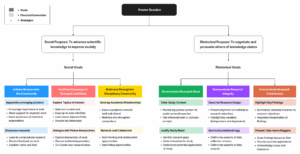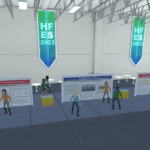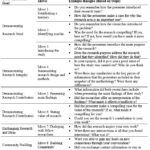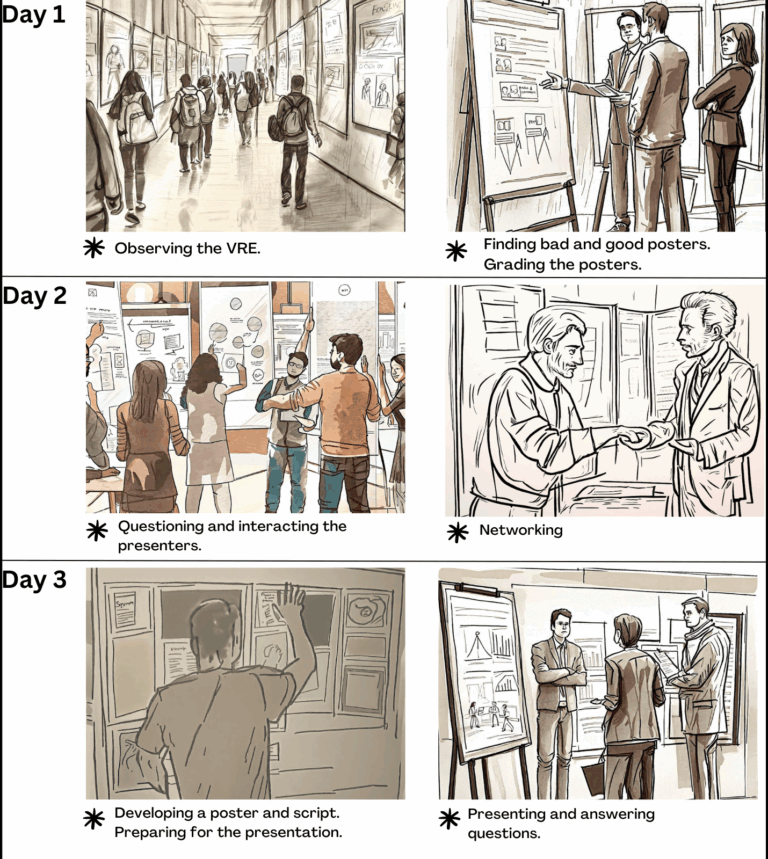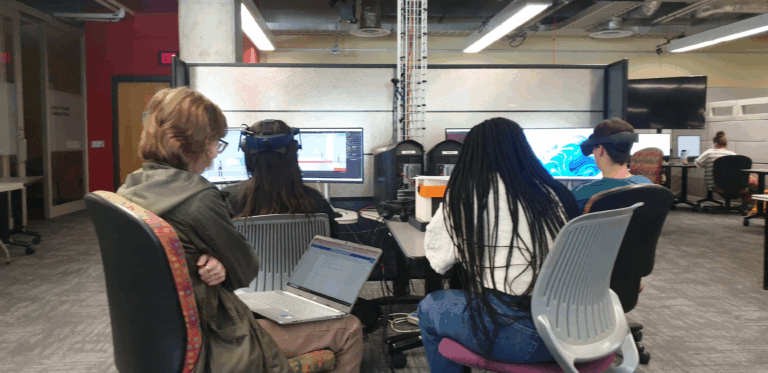VR-AI Learning Simulation:
A VR environment driven by trained AI characters to teach graduate students effective research communication skills
UX Researcher · VR Developer · UX Designer · AI Designer
Overview
This VR-AI simulation drops learners into a fully-immersive, three day poster conference. Trained AI characters simulate real-time interactions as learners complete tasks, building communication skills through real-time dialogue. Currently used in graduate training and education at Iowa State University.
The Problem
Effective research communication skills are difficult to develop as they are developed primarily through socialization, opportunities which many graduate students lack. How can we give all students equal and early access to these opportunities? Could emerging technologies help?
The Solution
We created a fully immersive VR simulation where trained AI characters act as members of a research community. Across three “conference days”, learners learn the key goals and values that shape the “why” behind effective communication, and practice it in real-time. Check out the video below:
The Process
1️⃣ Gathered design requirements
What is the “why” behind effective research communication? To understand this, we gathered design requirements from Subject Matter Experts (SMEs):
- Crafted user interview questions and conducted user interviews on the values, purposes, and beliefs of a research community with 20 faculty members and graduate students
- Analyzed 20+ hours worth of interview data using thematic analysis on MaxQDA
- Mentored 3 undergraduate researchers in data collections and interviews
2️⃣ Created design guidelines
To ensure that the simulation was pedagogically sound, I triangulated interview insights (what to learn), educational theory (how it is learned) and technological affordances (how tech can support learning). Using these foundations, I created:
- VR environment guidelines grounded in learning theory and SME input to ensure authentic learning contexts
- AI character training guidelines based on discourse analysis and authentic conversation samples to ensure authentic interactions
- Mockups and high fidelity prototypes based on design guidelines to validate key user flows and interactions
3️⃣ Trained and evaluated AI characters
Our challenge was to train the AI characters to speak, act, and behave believably like a member the research community. Using the design guidelines, we:
- Created 10+ AI characters using Retrieval Augmented Generation (RAG) and prompt engineering techniques, resulting in aligned knowledge, dialogue, and behavior
- Stress-tested the AI characters with adversarial queries; created documentation of recommendations and mitigations to harden compliance
- Used A/B experimental design to evaluate customized GPT model against default GPT -4o model
- Published prompt framework for developing educational AI agents that educators can utilize for their own educational contexts

📈 Key output: All AI characters met key pedagogical requirements. It also outperformed the default GPT on key benchmarks of helpfulness, honesty, harmlessness. Publication forthcoming.
4️⃣ Conceptualized and developed VR prototype
The next challenge was to create an authentic learning context in a VR environment. Using the design guidelines, I:
- Led a group of 3 undergraduate researchers through ideation, VR development and iterations, and data collection and analysis
- Conceptualized and developed 6 learning features and tasks on Unity3D, deployed on the Quest 3
- Evaluated early prototypes on usability (text readability, navigation) and experience design (speech bubbles, interaction dynamics), driving iterative improvements and refining the learning experience
📈 Key output: Finalized the simulation’s concept, storyline, learning tasks, and interaction design, including dialogue, user flow, and navigation mechanics. These elements became the foundation for subsequent development.
5️⃣ Iterated and developed full simulation
To ensure pedagogical viability of the simulation, I led a fidelity and usability study with 20 faculty and graduate students:
- Defined key fidelity dimensions (physical, functional, psychological and social fidelity) and established benchmarks for evaluation
- Designed and implemented validated surveys to assess fidelity, alongside structured observations and interviews for deeper insights
- Analyzed data using qualitative (thematic analysis, codebook) and quantitative methods (t-tests, ANOVAs) to evaluate usability and pedagogical viability
- Mentored a junior researcher throughout the process, guiding VR iterations, data collection, and analysis
📈 Key output: Findings showed that the simulation approximated the real experience, with overall high fidelity and usability. However, social fidelity was found to be low — users reported that some interactions were unnatural, decreasing user trust and presence. Research insights led to:
- 2 new features (to reduce cognitive load) and 3 design changes (to enhance social fidelity)
- Full development of the VR-AI simulation
- Contribution to evidence-based design for educational VR (publication forthcoming)
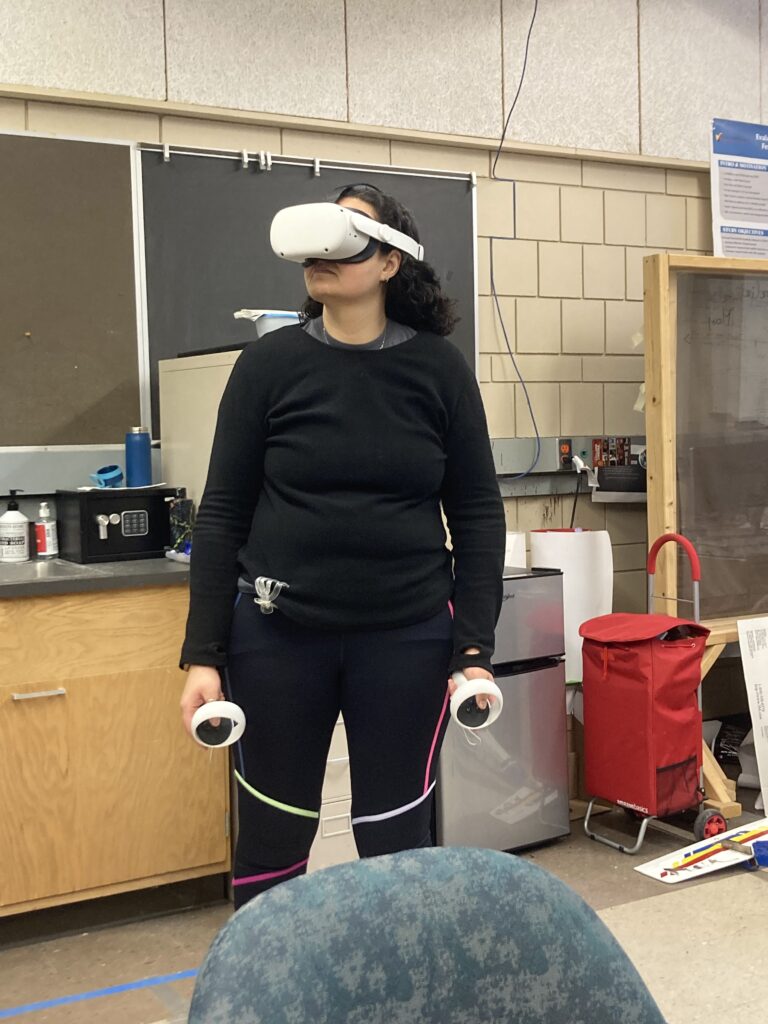

Conducting usability sessions
Testing feature iterations
Programming mishap! Sometimes our codes don’t quite go as planned!
6️⃣ Evaluated simulation for learning outcomes
The simulation was deployed in a graduate research writing course with 15 students. The goal was to evaluate whether the experience helped learners internalize the why behind effective communication and transfer those concepts into their writing:
- Evaluated learning outcomes using interviews, questionnaires, and stimulated recall; analyzed responses using comparative analysis and t-tests
- Assessed writing transfer through pre/post writing samples using textual analysis, holistic ratings, and t-tests
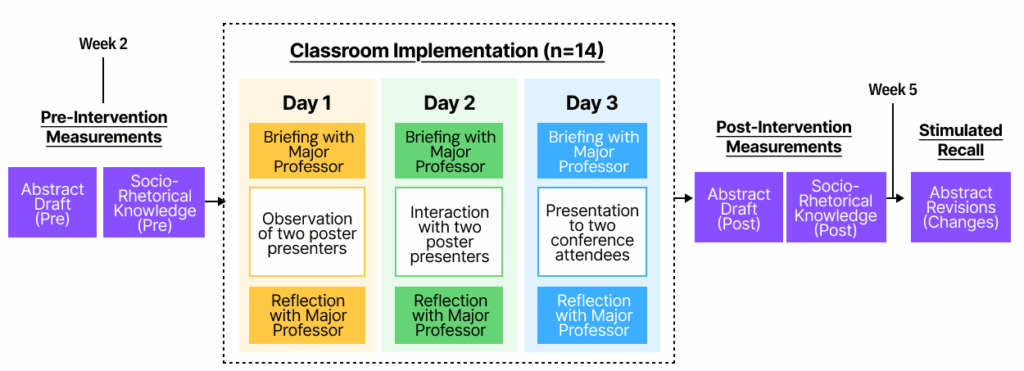
📈 Key output: Findings show statistical improvement in 5 out of 6 key concepts. 100% of learners saw writing improvement, 64% of writing revisions were motivated by simulation learning, and 87% said they’d use this tool if readily available.
The Outcome
This work demonstrated that AI conversations, embedded in a VR environment, can effectively simulate real social interactions, making it great for situated learning. This work’s success led to:
- Faculty collaborations for continued use of the VR-AI simulation in graduate courses
- Strategic discussions with leadership informing future institutional VR/GenAI initiatives for graduate education and training
- Field contributions through peer-reviewed publications and conference presentations on the use of VR/GenAI for educational purposes
